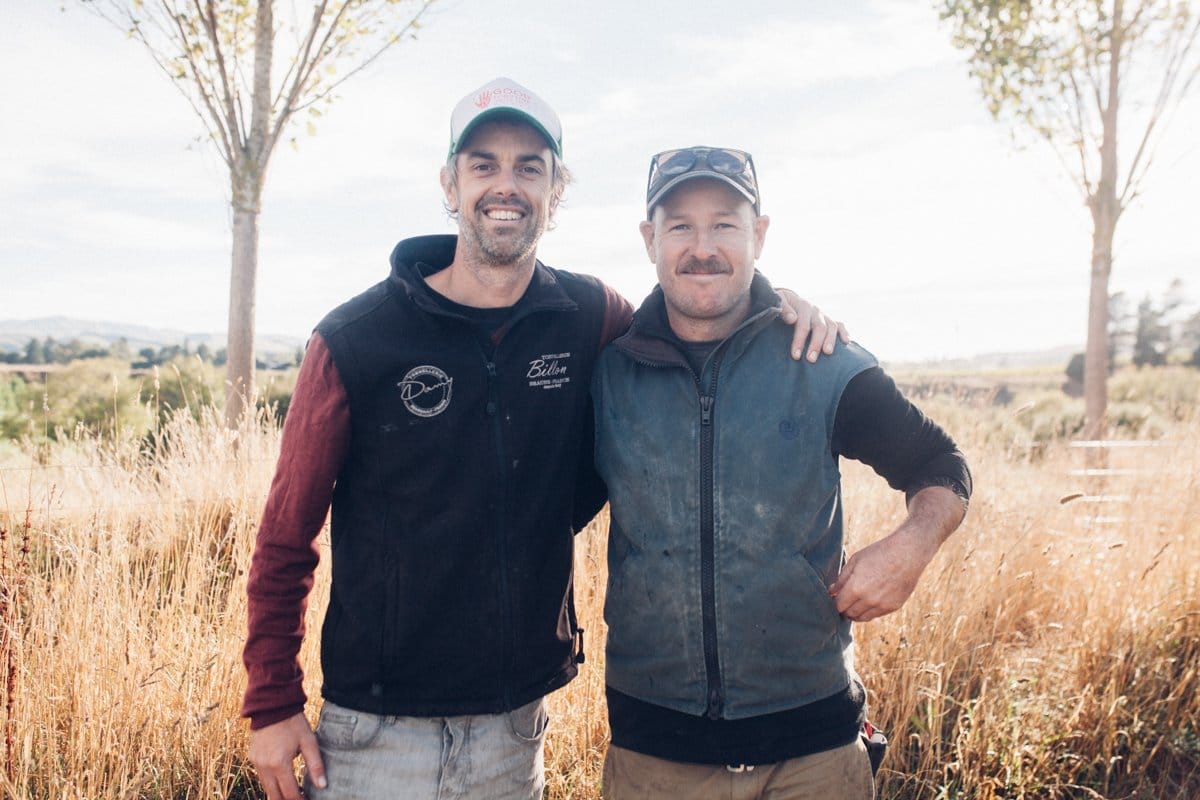2019: Harvest Review
We take our hat off again to our winemaker, Dom Maxwell, and viticulturist, Mike Saunders, for leading another incredible vintage. It was a fast and furious harvest, with most of the fruit picked by mid-April. The vineyard team brought in some of the best fruit we have ever seen grown on our vineyard. The winemaking team worked tirelessly to guide the juice to wine. We cannot wait to share the finished wines with you! 2019 is certainly one for the books.
2019 was the 8th vintage we have fermented Pinot Noir in the vineyard. Instead of transporting grapes to the winery, where ferments are subject to cross-contamination with commercial and winery yeasts, we keep them in the vineyard to ferment wild in situ. Blessed with impeccable fruit quality, we increased production from four 1.5 tonne fermenters to six. Fermenting in the vineyard at this scale poses many challenges, especially because the ferments are at the mercy of the elements. 2019 was good to us with dry, goldilocks conditions – not too hot and not too cold. Ferments finished without a hitch. Our 2019 Vineyard Ferment Pinot Noir is now tucked away for aging in a mix of old oak French barrels and our new 1000L tinaja.
Team work is at its best with the Vineyard Ferments. It connects people and roles that have increasingly segregated in the wine industry. Our winery team gets the chance to step out of the cellar and into the vineyard, while the vineyard team load fruit into the fermenter and see first-hand the transformation of grapes into young wine.
The Vineyard Ferment reminds us why we got involved with wine in the first place. It’s being outside, it’s working with our hands, connecting with nature. And it’s making something unique to this place, our place.
FROM THE WINERY
“Small crops, intense fruit, stunning Pinot Noir and Sauvignon Blanc, six vineyard ferments. ‘Nuff said.”
– Dom Maxwell, Winemaker
FROM THE VINEYARD
“2019 produced fruit of extraordinary quality. Smaller crops and open canopies allowed additional airflow and sunlight penetration to help brighten fruit, aid ripening and, at the same time, reduce disease pressure. We entered the season running with soil water at field capacity allowing us to leave the irrigation turned off until late January. Flowering was cool leading to moderate crops across the board. The lower crop meant bunches ripened beautifully and produced intense flavour concentration. Some great North Canterbury heat through December and January resulted in the same intensity and lifted flavour profiles in the aromatics Pinot Gris and Sauvignon Blanc.”
– Mike Saunders, Viticulturist
